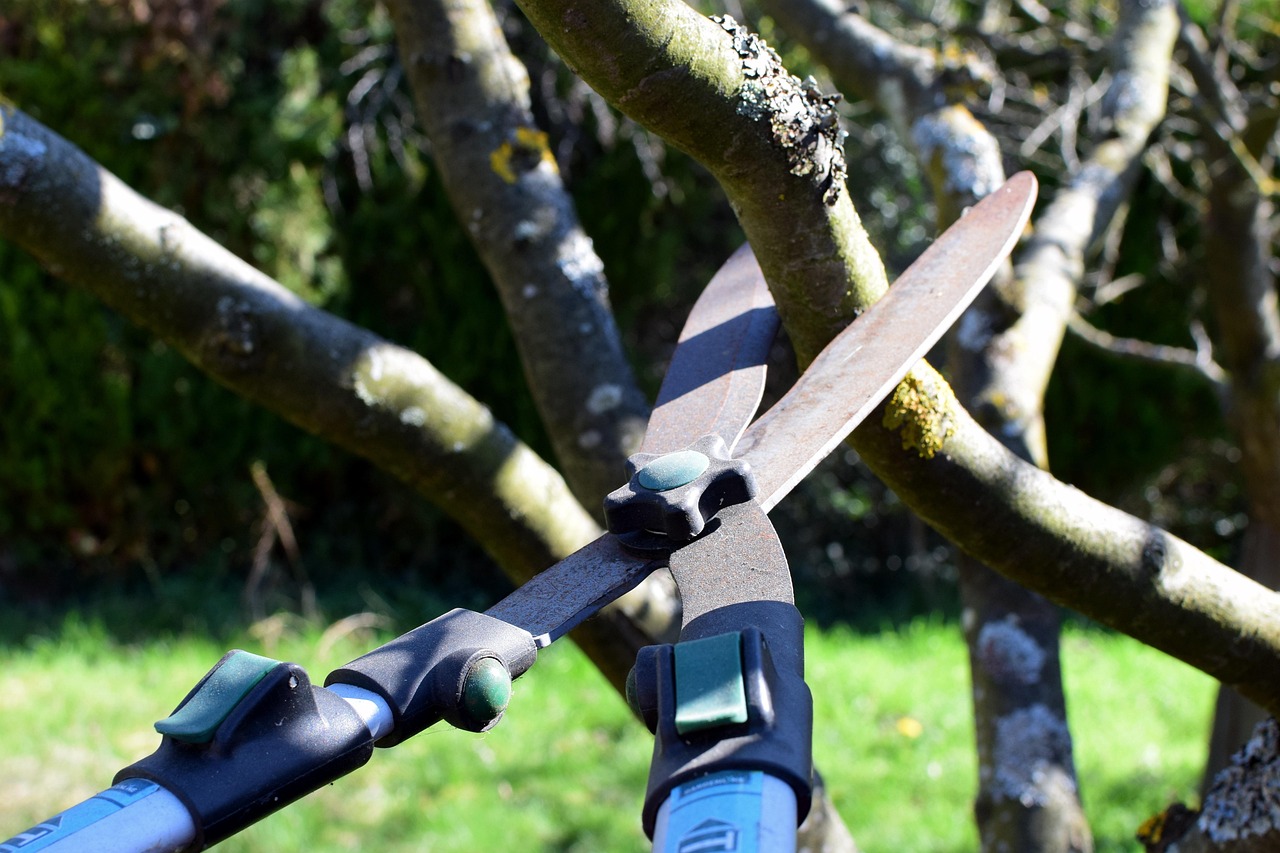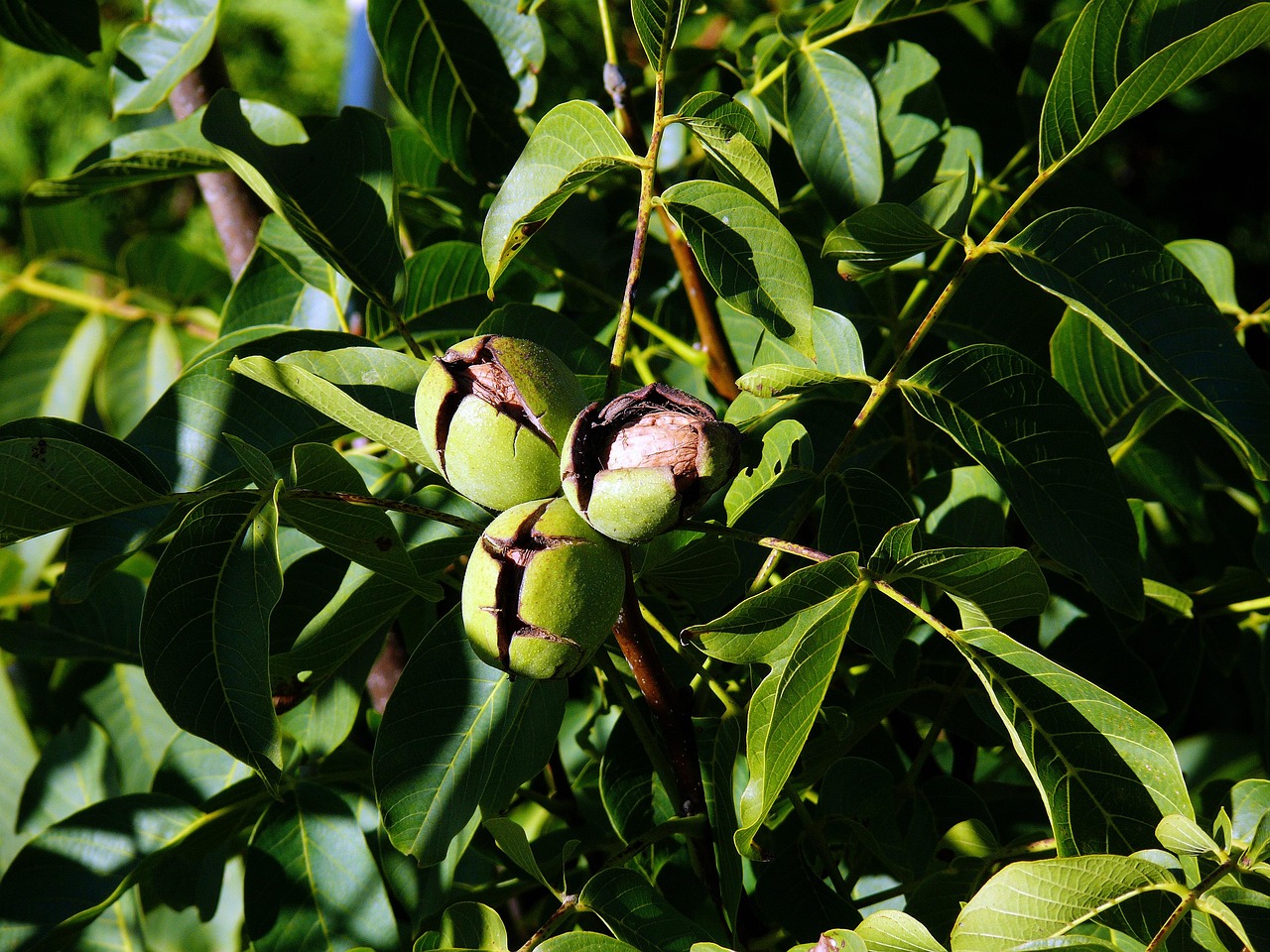Pruning walnut trees effectively is essential for enhancing nut production. Proper pruning improves tree health, increases sunlight penetration, and promotes better air circulation. This guide provides essential techniques and tips for successful walnut tree pruning.
Walnut trees are renowned for their delicious nuts and valuable timber. These trees can reach impressive heights and can live for over 100 years. However, to maximize their nut production and maintain their health, regular pruning is crucial. Pruning not only shapes the tree but also helps in managing its growth and productivity.

When it comes to walnut trees, understanding the best pruning practices can lead to a bountiful harvest. The right techniques can influence the size, quality, and quantity of nuts produced. Additionally, improper pruning can lead to disease, pest infestations, and reduced yields. Therefore, knowing when and how to prune is vital for any walnut tree grower.
Understanding Walnut Tree Growth
Walnut trees exhibit unique growth patterns that are important for effective pruning. They typically have a strong central leader and a wide canopy. Here are some key aspects of walnut tree growth:
- Growth Habit: Walnut trees develop a tall trunk with lateral branches that spread out widely. This growth habit allows for efficient sunlight absorption.
- Leaf Structure: The leaves are compound and can shade the inner branches. This shading can affect nut production if not managed properly.
- Fruit Production: Walnut trees generally begin producing nuts around 4 to 6 years after planting, with significant yields occurring by 10 years.
Understanding these characteristics helps in planning effective pruning strategies that enhance nut production.

Optimal Pruning Times
The timing of pruning is critical for walnut trees. The best times to prune are during the dormant season, ideally in late winter or early spring before new growth begins. This timing minimizes stress on the tree and reduces the risk of disease. Pruning during active growth can lead to excessive sap loss and weaken the tree.
Here are some additional considerations for optimal pruning times:
- Late Winter to Early Spring: This is the ideal window for major pruning activities.
- Avoid Summer Pruning: Summer pruning can stimulate new growth, which may not have enough time to harden before winter.
- Post-Harvest Pruning: Some growers choose to prune immediately after harvesting nuts to shape the tree for the next season.
Pruning Techniques for Walnut Trees
There are several effective techniques for pruning walnut trees that promote healthy growth and improved nut production. Each technique serves a specific purpose in maintaining tree health.

- Thinning: Remove crowded branches to improve air circulation and sunlight penetration. This practice encourages stronger branch growth and increases nut quality.
- Crown Reduction: If the tree becomes too tall or wide, selectively shortening branches can help maintain an appropriate size while promoting better light exposure.
- Deadwood Removal: Regularly remove dead or diseased branches to prevent the spread of pests and diseases.
- Shaping: Aim for a balanced structure with a strong central leader and well-spaced lateral branches to support nut production.
Tools Needed for Pruning
Having the right tools is essential for effective pruning. Using proper equipment not only makes the task easier but also ensures clean cuts that help the tree heal quickly. Here are some recommended tools for walnut tree pruning:
| Tool | Description |
|---|---|
| Hand Pruners | Ideal for small branches and precise cuts. |
| Loppers | Useful for cutting branches up to 1.5 inches thick. |
| Saw | A pruning saw is necessary for larger branches. |
| Safety Gear | Gloves and goggles protect against injuries while pruning. |
Equipping yourself with these tools ensures that you can perform effective pruning while minimizing risks to yourself and your walnut trees.
The process of pruning walnut trees requires knowledge, skill, and timing. By understanding the growth habits of walnut trees, recognizing the best times to prune, applying effective techniques, and using the right tools, you can enhance nut production significantly. Each step contributes to healthier trees and a more fruitful harvest year after year.

Common Pruning Mistakes to Avoid
While pruning is essential for walnut tree health and nut production, many growers make common mistakes that can hinder their efforts. Understanding these pitfalls can help you achieve better results. Here are some frequent mistakes to avoid:
- Pruning at the Wrong Time: Pruning during the growing season can lead to excessive sap loss and stress on the tree.
- Over-Pruning: Removing too much foliage can weaken the tree, reduce its ability to photosynthesize, and diminish nut production.
- Neglecting Tree Structure: Failing to maintain a strong central leader can compromise the tree’s balance, leading to limb breakage.
- Using Dull Tools: Dull cutting tools can cause ragged cuts, increasing the risk of disease and pest infestations.
- Ignoring Tree Health: Not assessing the overall health of the tree before pruning can lead to worsening conditions if diseases are present.
Signs of a Healthy Walnut Tree
A healthy walnut tree is more productive and resilient against pests and diseases. Familiarizing yourself with the signs of health can guide your pruning decisions. Here are key indicators of a healthy walnut tree:
- Vibrant Foliage: Leaves should be rich green in color, indicating good health.
- Strong Growth: Look for consistent growth patterns and a robust trunk structure.
- Minimal Pests: Healthy trees typically have fewer pest problems. Inspect for signs of infestation.
- No Signs of Disease: Look for any unusual spots, decay, or abnormal growths on branches and leaves.
Identifying and Managing Pests and Diseases
Pests and diseases can significantly impact walnut trees and their nut production. Identifying these issues early is crucial for effective management. Here are some common pests and diseases associated with walnut trees:
Pests
- Walnut Aphids: These small insects feed on sap and can weaken trees. Control measures include insecticidal soap or introducing natural predators.
- Codling Moth: This pest targets walnut fruit. Using pheromone traps can help monitor and control their population.
- Walnut Husk Fly: They lay eggs in developing nuts. Applying insecticides during the early nut development stage can help manage this pest.
Diseases
- Walnut Canker: This fungal disease causes bark lesions and can kill branches. Prune affected areas and apply fungicides as needed.
- Bacterial Blight: This disease leads to leaf spots and twig dieback. Ensure proper sanitation and avoid overhead watering to prevent spread.
- Powdery Mildew: This fungal issue appears as white powder on leaves. Improve air circulation through proper pruning and apply fungicides if necessary.
Best Practices for Maintaining Tree Health
In addition to proper pruning, several practices contribute to the ongoing health of walnut trees. These practices help prevent pests and diseases while enhancing nut production. Consider the following best practices:
- Regular Inspections: Frequently check your trees for signs of pests or diseases to catch issues early.
- Proper Watering: Ensure adequate irrigation, especially during dry spells, but avoid overwatering which can lead to root rot.
- Nutrient Management: Apply balanced fertilizers based on soil tests to ensure that trees receive necessary nutrients.
- Mulching: Use organic mulch around the base of the tree to retain moisture, suppress weeds, and improve soil quality.
The Role of Soil Quality in Nut Production
The quality of soil directly influences the health and productivity of walnut trees. A well-balanced soil composition supports root development, nutrient uptake, and overall growth. Consider the following factors regarding soil quality:
| Soil Factor | Description |
|---|---|
| pH Level | Walnuts prefer a soil pH between 6.0 and 7.5 for optimal nutrient availability. |
| Nutrient Content | Essential nutrients like nitrogen, phosphorus, and potassium should be present in adequate amounts. |
| Diversity of Microorganisms | A healthy soil ecosystem supports beneficial microorganisms that enhance nutrient cycling. |
| Water Drainage | Good drainage prevents waterlogging, which can lead to root diseases. |
By monitoring and improving soil quality, you can significantly enhance the growth potential and nut yield of your walnut trees. Understanding the intricate relationship between pruning, tree health, pest management, and soil quality sets the foundation for successful walnut cultivation.
Seasonal Care for Walnut Trees
Seasonal care is crucial for maintaining the health and productivity of walnut trees. Each season presents unique challenges and opportunities for care. Understanding what to do during each season can enhance nut production and overall tree health.
Spring Care
Spring is a vital time for walnut trees as they begin their growth cycle. Proper care during this season helps set the stage for a successful growing season. Here are some key activities to focus on during spring:
- Pruning: Complete any necessary pruning before new growth begins. Focus on removing dead or diseased branches and shaping the tree.
- Fertilization: Apply a balanced fertilizer to provide essential nutrients as the tree starts to grow. Conduct a soil test beforehand to determine specific nutrient needs.
- Pest Monitoring: Begin monitoring for pests such as walnut aphids and codling moths. Early detection is crucial for effective management.
- Watering: Ensure adequate moisture, especially if spring is dry. Newly emerging leaves require sufficient water to thrive.
Summer Care
Summer brings warm temperatures and increased growth for walnut trees. During this season, it is essential to maintain tree health through proper care practices:
- Weed Control: Keep the area around the base of the tree free from weeds that can compete for nutrients and water.
- Water Management: Water deeply but infrequently to encourage deep root growth. Monitor soil moisture regularly.
- Pest and Disease Surveillance: Continue checking for signs of pests and diseases. Use integrated pest management strategies as needed to protect the trees.
- Mulching: Apply organic mulch around the tree base to conserve moisture and suppress weeds.
Autumn Care
As the growing season winds down in autumn, walnut trees prepare for dormancy. This season is crucial for ensuring trees are healthy going into winter:
- Harvesting Nuts: Collect walnuts promptly to prevent spoilage and pest infestations. Ensure proper handling during harvest to maintain nut quality.
- Post-Harvest Pruning: After harvesting, consider light pruning to remove any dead or diseased wood.
- Soil Testing: Conduct soil tests after harvest to determine nutrient levels and amend as necessary before winter.
- Watering: If the fall is dry, provide sufficient water to ensure trees go into dormancy with adequate moisture reserves.
Winter Care
Winter is a dormant period for walnut trees, but there are still important care practices to consider:
- Protection from Frost: In areas prone to late frosts, consider wrapping young trees with burlap or protective coverings.
- Pest Control: Inspect for potential pest infestations that may occur during winter. Take steps to manage any identified issues.
- Pruning Planning: Use this time to plan your pruning strategy for the upcoming spring, considering any specific needs based on previous observations.
- General Maintenance: Clear debris and fallen leaves from around the base of the tree to minimize disease risk in the spring.
The Importance of Pollination in Walnut Production
Pollination plays a significant role in the nut production of walnut trees. Understanding how pollination works can help ensure higher yields and better nut quality. Walnut trees are typically monoecious, meaning they have both male and female flowers on the same tree. Here are some key points regarding pollination:
- Flowering Period: Walnuts bloom in late spring, with male catkins releasing pollen that must reach female flowers for fertilization.
- Wind Pollination: Walnuts primarily rely on wind for pollination, making surrounding environmental conditions critical.
- Pollen Compatibility: Different walnut varieties may have varying levels of pollen compatibility. Planting compatible varieties can enhance pollination success.
Choosing the Right Walnut Varieties
Selecting the right walnut variety can significantly impact overall nut production. Factors such as climate, soil type, and intended use should influence your choice. Here are some popular walnut varieties:
| Variety | Description | Best Uses |
|---|---|---|
| Serr Variety | This variety has a high yield and produces large nuts with excellent flavor. | Fresh consumption and baking. |
| Cara Black | A hardy variety known for its disease resistance and reliable production. | Culinary applications and oil extraction. |
| Paradox | This hybrid variety is known for its rapid growth and adaptability to various soil types. | Timber and nut production. |
| Lara | A productive variety that matures early, providing a good yield of high-quality nuts. | Fresh markets and value-added products. |
Selecting suitable walnut varieties tailored to your local climate and soil conditions can enhance your overall production outcomes. Knowing the characteristics of different varieties allows you to make informed decisions that align with your growing goals.
Additional Tips for Successful Walnut Tree Management
In addition to pruning, seasonal care, and variety selection, several other factors contribute to the overall success of walnut tree cultivation. These considerations encompass environmental management, ongoing education, and community involvement.
Environmental Management
Creating an optimal growing environment for walnut trees is crucial for maximizing nut production. Here are some strategies to consider:
- Microclimate Creation: Utilize windbreaks or plant companion crops to create a microclimate that protects walnut trees from harsh weather conditions.
- Soil Amendments: Regularly amend soil with organic matter such as compost to improve soil health and structure.
- Water Conservation: Implement drip irrigation systems to conserve water while ensuring adequate moisture levels for tree health.
- Sunlight Exposure: Position trees to receive maximum sunlight throughout the day, which is vital for photosynthesis and nut development.
Ongoing Education and Research
Staying informed about advancements in walnut tree cultivation can enhance your practices. Engage in continuous learning through the following methods:
- Agricultural Workshops: Attend local workshops or webinars focused on walnut tree management and pest control strategies.
- Online Resources: Utilize online platforms and agricultural websites that provide updated research and best practices in walnut cultivation.
- Networking with Other Growers: Join local or online farming communities to exchange knowledge, experiences, and techniques with other walnut growers.
- Consulting Experts: Seek advice from agricultural extension services or horticulturalists specializing in nut tree cultivation.
Community Involvement
Engaging with your local agricultural community can provide additional support and resources. Consider the following avenues:
- Farmers’ Markets: Participate in farmers’ markets to sell your walnuts and connect with consumers who appreciate locally grown products.
- Cooperative Programs: Join cooperative programs that allow growers to share resources, tools, and marketing strategies.
- Volunteer Opportunities: Volunteer for local agricultural initiatives or conservation programs that support walnut tree health and sustainability.
Final Thoughts
Successfully cultivating walnut trees requires a comprehensive approach that includes proper pruning, seasonal care, pest management, and soil quality considerations. Selecting the right varieties tailored to your environmental conditions can further enhance nut production. Additionally, ongoing education and active community involvement can provide valuable resources and support throughout your growing journey.
The process of nurturing walnut trees is both rewarding and challenging. By applying the practices outlined in this guide, you can ensure that your walnut trees remain healthy, productive, and resilient. Remember that patience is key; good results come with time and careful attention to all aspects of tree care.
Ultimately, your dedication to understanding walnut tree management will not only lead to better nut production but will also contribute to the sustainability of walnut cultivation in your area. Embrace the journey of growing walnut trees, and enjoy the fruits of your labor for years to come.
